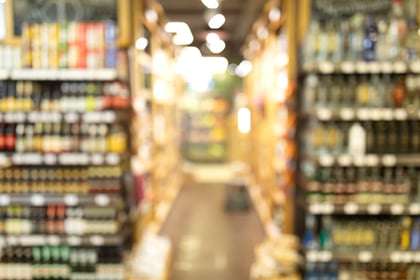Experiential marketing can transform retail stores by creating an emotional connection tied with an experience. At ShopTalk 2023, there were many strategic discussions about how to implement experiential marketing for your store. Read on to learn more from Jim Cusson, President of Theory House, and Adeela Hussain Johnson, President of BEIS.
The State of Experiential Marketing (and Where It's Headed)
QR codes, pop-up shops, and in-person events are part of the world of experiential marketing. Experiential marketing goes beyond "traditional advertising, " engaging customers and immersing them in the brand's story.
Jim Cusson, President of Theory House, dives into some trends elevating experiential marketing.
Categories that are seeing growth:
- In-person vignettes in retail stores
- Immersive experience in home improvement
- Combination of digital and static
- Augmented reality
"91% of consumers have indicated they're more likely to purchase a brand after participating in an experience or an activation. Also, 78% of millennials want to spend money on events and experiences over products and purchases."
The Impact of Experiential Marketing
"70% of B2C marketers struggle to provide value to their C-suite." - Jim Cusson
Sometimes it can take a lot of work to break down how to measure experiential marketing. What's the correct KPI or goal to tie to something so versatile? Brand engagement can be a key factor when looking at experiential marketing metrics.
Consider the following:
- In-person participation
- Word-of-Mouth
- QR code social shares
- Digital event attendance
- In-person pop-up attendance
Depending on the type of experience, engagement could be a robust KPI to tie to company goals. An experiential marketing roadmap may look something like this:
Activation - Social amplification - Social shares + conversation
Creativity and Experiential Marketing
People crave experience.
Consumers can connect over a shared experience happening in real-time, and it's a more profound way to enjoy a personalized shopping experience. This experience could be a hybrid combination of in-person or digital experiences. An exciting shift we're seeing is digitally native brands embracing immersive and pop-up experiences in physical retail.
Jim Cusson and Adeela Hussain Johnson, President of BEIS, dive more into the creativity that's popping up in experiential marketing throughout in-person and digital experiences.
Some products that appear in pop-up events don't have a physical product at the event. It's more about inviting people to experience the brand.
For example, you can amplify in-person events with digital products, including:
- Geo-targeted hyper-local attendees.
- Digital coupons to shop online if you're not in-person.
- Real-time media on social media platforms.
Experiential Marketing Case Study: Beis
Beis Shay Mitchell's luggage pop-up (The Grove) - Personal invitation inviting consumers to come touch and experience the feeling of travel. Successful in-person pop-up merged with TikTok and Instagram.
Goal: Instagrammable moments
As people enter the pop-up space, they're invited to join another world. Music, lights, and hotel keyrings make the customer feel like they're being transported to another place.
"Make sure your KPIs are relevant to the activation you're doing. It's not always going to be revenue and ROIs that are as clear as the paid ads that you can see direct revenue. Make sure your KPIs are relevant to your brand and that the senior management and board understand the strategy. "- Adeela Hussain Johnson
When diving into experiential marketing and immersive experiences, thinking more significant than the product or space is okay. Sometimes you have to be creative in how you present the experiential product launch.
Instagrammable Moments
"And so the point of this pop-up was doing something so that when somebody walks into it, they're like, Immersed. They're immersed in the brand. Even if they know nothing about the product (Beis), they'll remember that experience. So then, if they hear the brand again, get served in an ad, or there is some activation, it clicks, and that's a much more memorable experience. The space was smaller than a stage. We spent more time focusing on the exterior. The focus was on all the Instagrammable moments." - Adeela Hussian Johnson
Big-Picture Thinking Beyond the Experiential Pop-Up
The event is more than just the event itself. The pre-work, event work, and post-work make an immersive experience successful. Check out these tips to consider next time you plan a pop-up event.
Consider the following:
Plan in advance: When you can plan far in advance from your event date. Six months is an ideal time to consider when planning the prep, launch, and post-work.
360 concept: Think more extensively than your event space or product. What would be interesting to a customer as they walk in? For example, sounds, smells, and sights can bring the area to life, creating an exciting experience worth sharing digitally.
Tie product launch to current events: When timing your launch, current events can add extra excitement when promoting the event or while your pop-up is taking place.
Polls and surveys: While you have an excited and active customer in the experience, invite them to share their experience. The more feedback you have, the more likely you'll get a higher click rate and better opportunities for the next occasion. Asking participants to vote and poll surveys during activation is a fun and exciting way to keep the buzz going outside the event and in real time.
Test and experiment: Don’t be afraid to think outside-the-box, test new concepts, and try something new. “Newness and being different” is what’s setting retailers up for success in the bridge of in-store and digital e-commerce. For more on new retail trends, read here.
Social Connection + Conversation
Social media platforms, Facebook groups, and direct messages are tools you can leverage to activate and excite your loyal community around your brand.
"Social media is an amazing tool for generating and getting feedback from your customers. People would come in if they'd shopped before getting a different discount code, and then we could see they were coming back. If you posted it, spoke about our brand, or tagged us, then we could follow up with those consumers and speak to them personally." - Adeela Hussian Johnson
Consider building your loyalty and engagement through post-purchase and post-event surveys. Let the customers tell you what they want from the beginning.
Check out some of the following questions:
- How did you meet us
- Why did you engage with us
- What's your experience so far?
- Why did you re-engage with us
- What pop-ups have you attended?
Understanding your customer's experience, perception of your brand, or other areas of opportunity can be helpful across multiple distribution channels and help your next experiential marketing event be a big hit. For more on ShopTalk customer engagement retail insights, check out this article.
Leverage Experiential Marketing Today for Impact
Experiential marketing is an impactful tool that can transform retail stores by creating meaningful and memorable customer experiences. By setting tailored KPIs, leveraging outside-the-box thinking and creativity, and talking to your customers through social media channels, retailers can reap the benefits of this innovative marketing strategy and help drive brand awareness into brand loyalty.
For more on ShopTalk, check out Transforming the Store Workforce With New Roles and Capabilities



